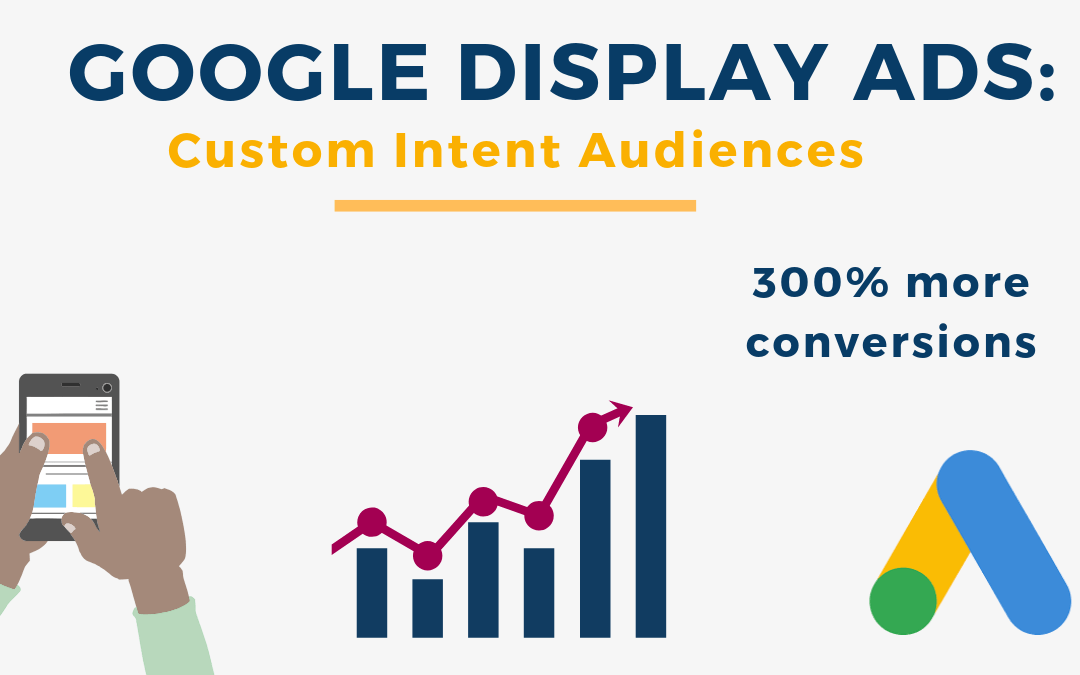So much money is spent on determining what works in marketing. It’s a critical stage of the modern marketing lifecycle. A large part of marketing depends on targeting people by demographics. However, that only scratches the surface of online advertising power and potential.
Do Custom Intent Audiences drive more conversions? By identifying what your target audience is likely to look for online before transacting with your business, you can reach people when they’re most likely to need your products or services. This, in turn, can drive more conversions at a lower cost.
There is more to understand about how custom intent audiences work before being able to implement them successfully. Below we will dive into how to identify and build your own audiences, customized to your customer’s life cycles. At Zahavian, we had huge success in implementing custom intent audiences. Keep reading to find out exactly how we did it and what the results were.
Driving More Conversions with Custom Intent Audiences
As mentioned earlier, custom intent audiences allow your ads to appear to people based on their previous google search behavior.
For the past several years, Facebook has been famous for showing ads based on certain websites, apps and even physical locations you visited. This was a marvel at the time within the digital marketing world. However, it can be rivaled or beaten in terms of the targeting precision that can be tapped through reaching users with specific search behavior.
Identifying Your Custom Intent Audiences
By understanding your target audience’s behavior and activity lifecycle, you will be able to find new marketing opportunities. Using custom audiences actually requires some conventional or classical marketing work in order to understand how to use it properly.
By building user personas for your ideal customer or client, we were able to hypothesize and test custom intent audiences that were most likely to need our client’s services in the near future.
How to Build Targeted Custom Intent Audiences
Keyword Research
Using the customer or client persona’s you have built, it is time to do some keyword research on what your persona audience is likely to research. You can use a tool like Google’s Keyword Planner or another 3rd party tool. This will help you build an initial foundation of keywords and ideas.
Once you have found a set of foundational keywords, you will want to segment these as detailed as possible. As you might build ad groups for Search or Display ads, you will do the same for your custom intent audiences here.
Segmenting your audiences like ad groups has nothing to do with quality score or cost per click since we’re dealing exclusively with display ads. Rather, by segmenting based on the different keyword topics, this will allow us to test and measure which audiences are producing the best results.
Keywords for Pre-Purchase Cycle
Consider also diving deeper into your keyword research. Don’t just rely on keywords that you would use for Google Search Ads (AdWords). Look for research-based keywords, rather than hot or purchase intent keywords. This allows your ads to show ahead of them making the purchase decision. This splits into 2 different types of keyword categories:
- Behavioral Keywords researching your industry and finding information before transacting with a business akin to yours
- Keywords in other industries that share common purchase patterns and cycles that involve yours.
While we can’t divulge which behaviors we target, as it’s part of our research and ‘secret sauce’. Instead, let me illustrate an example of purchase patterns and cycles.
Let’s suppose that we’re advertising for a full-service moving company. Once we have defined our customer persona’s, we have a better idea of what other purchase behavior our ideal audience has leading up to hiring a moving company. This audience may be likely to:
- Find moving gear and equipment
- Maybe searching or window-shopping for new furniture or appliances
- Researching best schools in areas they’re moving to for their children
- Searching topics on realtors, real estate and property tax info
Having created our customer personas and defined their shopping and online search behavior, we can create separate audiences for each of these behaviors. We may even split each behavior into sub-audiences if we deem it necessary. Not all of these will be perfect or even yield any results, ultimately. When starting with custom intent and in-market audiences, it’s important to hypothesize and test. We may find that property tax, real estate and furniture shopping-related searches perform well, but best schools in those areas do not – or vice versa. We simply don’t know until we test.
Later, we can cull the underperforming audiences and focus a larger portion of the budget on winning audiences.
URL Targeting
Just as you will build keyword-based audiences, now you will want to turn your attention to URLs. Determine which websites and URLs your audience is most likely to visit.
This is analogous to keywords, except you’re not focusing on Google Search as much as the results people might click on or visit from referral sources, brand searches and finding information around the web leading up to transacting with a business like yours. Google does not track users that have visited these pages. It only uses these URLs to build a list of keywords associated with these URLs’ pages.
When targeting URLs, it’s recommended to keep these audiences separate from your keyword-based custom intent audiences. This again gives you greater control to measure the effectiveness of the audiences.
Add Audiences Brand Name Searches
Just as we mentioned with URL targeting, you can include keywords for brand searches. Once you have defined the customer persona and the types of searches they’re likely to perform, now look at the top branded companies and websites serving those searchers in the results.
Again, create a separate audience for the brand searches to see how well they perform. Make the list of brand searches nearly exhaustive for your market (whether local or not). You should include brand name variants, such as “ABC furniture” and “ABC furniture warehouse” as an example.
Our Results with Custom Intent Audiences
We were very curious to see how this would work in our industry, law firm marketing. So, we had run 2 campaigns to observe and measure the impact of custom intent audiences.
The first campaign was fairly standard in terms of configuration for a local-market law firm’s advertising. This is referred to below as the standard or benchmark campaign. It targeted people based on location and broad keyword topics. The second audience was composed of 11 URL and keyword audiences custom intent and in-market audiences. Both campaigns used the exact same ad creative, bidding strategies and geo-targeting settings. The sole difference was the composition of the audience targeting.
The results for the custom intent audience were significant over the benchmark campaign.
The custom intent audiences resulted in a 256% decrease in cost per action, from $80.04 in the benchmark campaign down to $31.25 cost per action in the custom intent audiences campaign. The “Winners” referred to in the image above, is the projected, resulting CPA after culling the underperforming custom audiences. Underperforming audiences are defined here as audiences that failed to produce any leads.
When measuring the return on ad spend, across all conversion goals, the custom audiences campaign produced a ROAS of 416% vs. 156% from the benchmark campaign. The projected performance of the winners produced a ROAS of 619%.
We believe that the ROAS is much higher, based on the value per case we are generating for the firm. However, there are several limiting factors in measuring our ROAS. Primarily, the case value is extremely difficult to measure for this area of law. The margins are high, however, what the firm nets is determined much later and it is difficult to measure due to limited intelligence supplied by this client. Therefore, we take a conservative approach to the case, conversion and lead values reported here.
One of the most impressive metrics was the ultimate cost per lead from the campaign. The campaign was able to drive new and more leads at less than one-third the cost of the benchmark campaign at $52.04 per lead. When leaning out this campaign and trimming the underperforming segments, the winner’s would have produced a cost per lead of $35.06.
Ultimately, our custom audiences produced over 3x more leads compared to the benchmark campaign and at significantly reduced costs. Because the audiences aren’t perfect (illustrated by the winning audience results), there is still work to do. This includes culling underperforming audiences while finding new audiences. However, the preliminary results from our first custom-intent based campaign are very promising.
Related Questions
What are Google Custom Intent Audiences? Custom intent audiences allow advertisers to target and reach their business’ ideal audiences based on in-market keywords and URLs. This allows your Display ads to be served to people based on their online search and in-market behavior.
Can Custom Intent Audiences be Used in Search Ads? Google Custom Intent Audiences are only designed for Display and YouTube ad campaigns. They rely on search terms to identify the audience you from Google Search, but can’t be used for Google Search ads directly.
What’s the Difference between In-Market Keywords vs. Search Terms? As of now, Google In-Market Keywords are used to build custom intent audiences for Display Ads (GDN). Search Terms are used to create custom intent audiences for YouTube and Video


